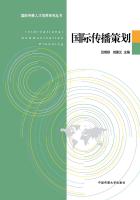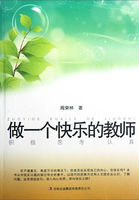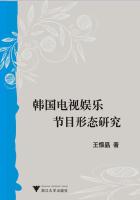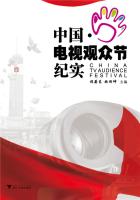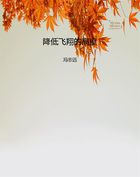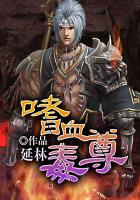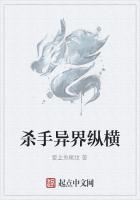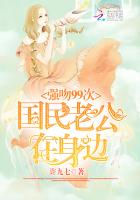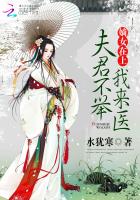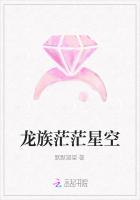那么,在以主持人应有的“能说”的基本素质前提下,了解了建构“告知体”的原理后,就是如何进行结合主持人个体的素质来“塑造”具有鲜明风格的“讲故事者”(storyteller)这一职业角色了。关于这一点,Denzin为我们更好地掌控在对外广播里传送的广播电视节目,提供了颇有价值的参考(1992,第90页):
To become the self of the stories one tells requires learning how to be a storyteller—that is,conforming to an implicit canon concerning self-texts.This canon varies from group to group.In biographies,autobiographies,and magazine articles,it holds that selves be gendered,familied productions,grounded in class experiences,and molded by turning-point moments that can be objectively recorded.Further,it holds that persons are the best observers of theirselves and can tell stories that accurately reflect their lives.It is a cultural understanding that readers can expect the above ingredients in a biography or an autobiography.These ingredients are also the narrative devices which journalists and editors of news magazines employ to assemble stories.
这些文字总结对从事对外广播运用非母语英语进行节目主持的主持人来说,提供了进行语言组织和“口语化”呈现的参考。虽然担任“讲故事者”角色的主持人是在讲述有关新闻事件或人物涵盖的“故事”,但是,能否进入“故事”所依赖的“情境”,就成为能否把“故事”讲得“有声有色”、“引人入胜”的关键所在。而在主持人手中的文字稿,就是这一“情境”的最具体实物表现。当然,完全理解文字稿字里行间蕴涵的“情境”要素,又是主持人达成通过“告知体”形成“能说”的状态的唯一因素。
那么,这种以主持人需要转变为“口语化”的文字稿体现的“情境”的实质该如何被理解和认识,以致达成有效地掌握呢?
对于“情境”这一术语的讨论,笔者已经用了很多的笔墨,就不在此再加以重复展开了。而当主持人手中的文字稿与“情境”联系起来后,就有了用新的视角对“情境”的实质进行认识的必要了。对于这一点,Denzin(1992,第90页)提出了“cultural text”这一术语:
Cultural texts are conservative productions.They appropriate,preempt,and intimidate the workings of the everyday sociological imagination.They have the ring of morality.They use the life stories to give value to family forms which may no longer exist.They perpetuate values and meanings which may not be appropriate to the actual situations of interacting individuals.They alter and rearrange the everyday sociological imagination which contains the interpretive theories that structure the lived experiences of ordinary individuals.
显而易见,主持人手中待被转变为“口语化”的文字稿是具有丰富的社会内涵的。而这就是如此的文字稿同“情境”紧密联系在一起的原因所在,同时,也为主持人挖掘自身的积累来探索到“恰到好处”的呈现方式,提供了既具广阔空间,又颇具挑战性的要求。毕竟,运用非母语英语的节目主持人,是远离众多由文字稿体现的文化或社会“情境”的。那么,秉持怎样的标准通过“口语化”的语言来“告知”其承载的故事呢?笔者认为Denzin对形成文字化“情境”的“cultural text”的特质的分析,对主持人“口语化”演播创作的“度”的把握提供了新的认识视角。他这样分析道(1992,第91页):
There are no real biographical subjects independent of the stories told about them,and even these texts,in the telling,displace the teller.We can never get back to raw biographical experience.The closest we can ever get is when a subject,in an epiphanal moment,moves from one social world to another.In these instances the subject is between interpretive frameworks.When this happens,experience is described in words that have yet to be contaminated by the cultural understandings of a new group.
以如此的分析为出发点和底线,主持人的“口语化”演绎形成的“告知体”,就有了既不篡改新闻故事具有的客观性,又着色上了主持人自身文化或社会价值体系的诠释部分这个“度”。这是任何广播电视声像媒体所具有的特质,因而达成百分之百真实度的传记或自转叙述体是不存在的。更何况,主持人的工作效果又是在节目的整体处理后形成的,其具有的“能说”,也是在情节的编排、音乐的烘托、旁白的补充以及特效的辉映后的结果。
总之,形成主持人的“能说”的语言呈现能力,不仅有主持人自身积累的知识的爆发,也有制作节目的所有成员在不同位置上作出的贡献。简单地说,主持人的“能说”是经过三步而达成的,即:深化理解文字化的“串词”稿—原文式阅读(Textual readings);将对文本稿的理解转变为“口语化”的告知体(The telling);依赖作为传播源的广播电视载体成为传播内容的一部分,而将报道转化为文化产品(Turing stories into cultural commodities)。
第三节英语节目主持人的“善问”——对Rubin的视角的探讨引发的分析
由于当今的媒体传播的国际化和节目类型及覆盖内容的丰富化,使得掌控节目内容的方法也显得越来越多样化了。最为直观的就是,节目的掌控从对白纸黑字文字稿报道的一个字一个字地播报式的播音员,到对文字稿的稍加口语化的、个性化的处理,形成对文字稿内容的分析式的主播,再到对文字稿转变为“口语化”的、以个人性格特点来“重塑”内容精神气质的主持人。而在对外广播里出现的主持人的最明显的特点,是集采编播一体的记者型定位,使得主持人成为以声像作品为形式的广播电视节目里最为引人注目的传播因素了。
那么,除了“伶牙俐齿”、“出口成章”的“能说”外,记者型节目主持人的另一个特质就是“善问”。这一特质是在外采、访谈及直播连线报道的过程中充分体现出来的。那么,从主持人的总体掌控节目的角度来探讨“善问”的运用方法,应该如何理解呢?
笔者认为主持人的“善问”素质的形成,主要是有赖于对在采访过程中具有的“提问”与“回答”间形成的“有问有答”的正确理解和认识。对于美国北依利诺伊斯大学的《社会学》学者Rubin的研究进行深化分析后,笔者认为有这样几个方面可以为英语节目主持人的“善问”提供理论上的解读。
1“善问”的基础——展开日常对话
“提问”,是受众对从事媒体传播的职业人的特点形成的普遍印象。但是,如何把问题问好而得到受众期待的答案,就是“善问”对所有主持人提出的标准了。而对于运用非母语英语的节目主持人来说,有分寸的、清晰的提问,就更是具有难度了。关于这种难度的分析,笔者在《英语采访艺术》(林,2008)一书中已经作了详细的介绍。在此,笔者聚焦的是达成“善问”的基础,即:日常对话式的“有问有答”。
所谓“日常对话”,就是我们最熟悉的、在每天的生活里的说话方式。其实,在今天的广播电视节目里,采用这种方式的节目比比皆是,不仅受众觉得节目接近生活,而且主持人也觉得不再“心累”了,因为自己说的每一句话是以自然的状态出现的,感到整个人是站在地上实实在在地说话了。
那么,这种感觉就是形成受众眼里的主持人“善问”能力的基础。对于这一点,Rubin为我们提供了存在于“日常对话”和新闻人的“善问”间的共同之处(1995,第23页):“1)If you can limit the number of main topics,it is easier to maintian a conversational flow from one topic to another.Transition should be smooth and logical;2)People who are chatting usually indicate that they have heard and understood the other person's response.Interviewers do that too;3)Just as in an ordinary conversation,in an interview the parties take turns speaking and indicate when their turn is through;4)Both ordinary conversations and interviews follow similar ways of clearing up misunderstandings.”
所以,要形成“善问”的习惯和能力,主持人除了语言知识上的积累外,更为重要的是对受访者所依存的文化和社会“情境”的认识与理解。毕竟,主持人面对的受访人是带着不同的“情境”来接受“提问”的,所以,主持人“善问”的功力就是必要的职业素质了。触及这一“功力”,实际上是强调如何进行提问而达成“善问”的方法。就这一点,笔者认为Rubin的提醒很具参考价值(1995,第124页):
第一,面对含糊不清的回答时:
In spoken language,people often make ambiguous or vague statements.They may use pronouns where the noun being referred to is unclear,such as:
“She told me she wanted to run for office.”
Who is the first she,and who is the second she?In a conversational repair,you can ask for clarification by suggesting what you thought the person meant and asking for confirmation.You could ask:
“You mean Bella said that Edna wanted to run for office?”
Or you could follow up a confusing deion of legislative process with a question like,“Is it the chair of the committee who does that or the subcommittee chair?”The answer might be,“Neither,it is done by the chair of the rules committee.”

